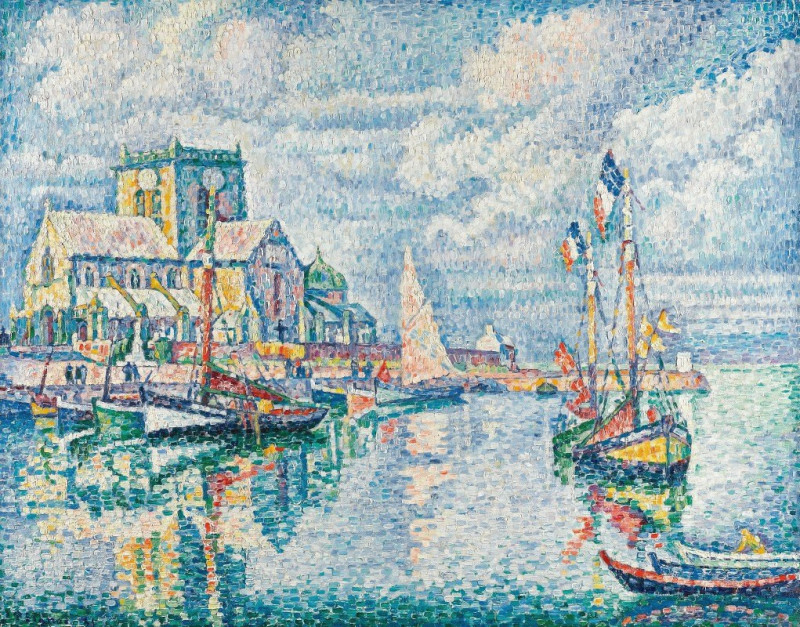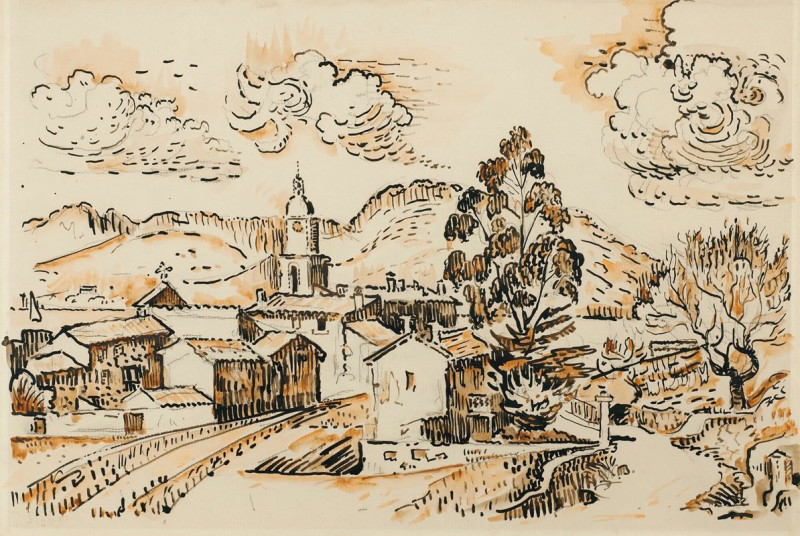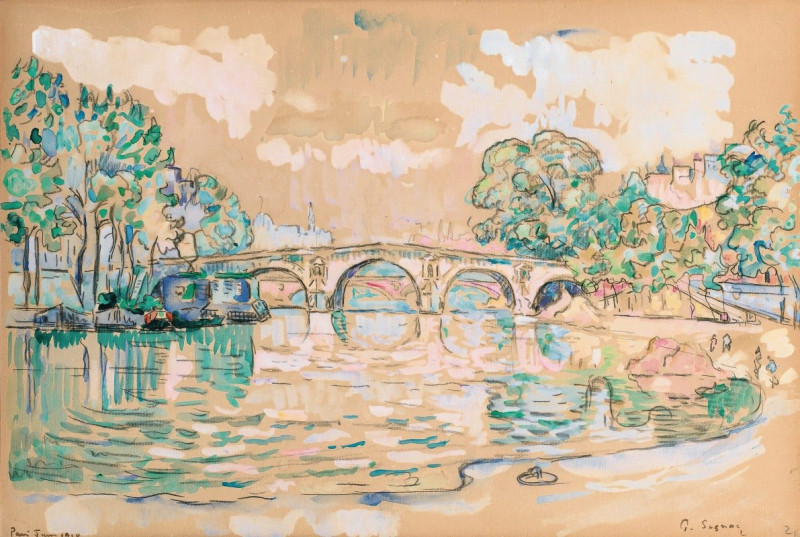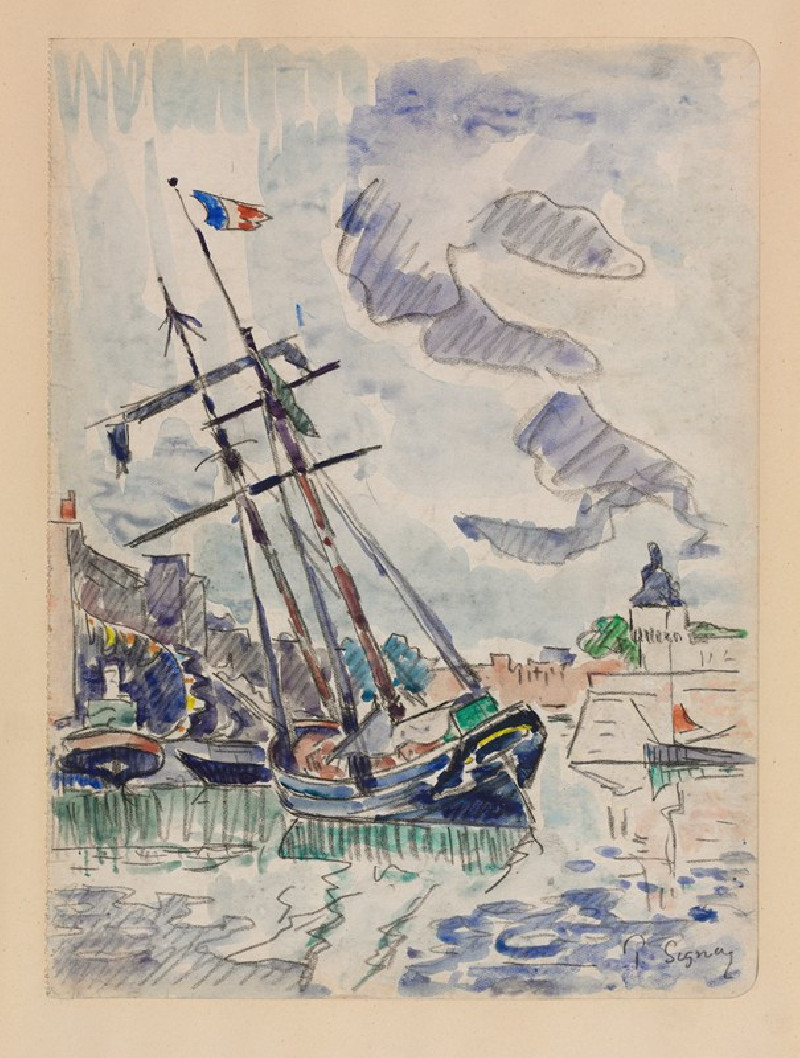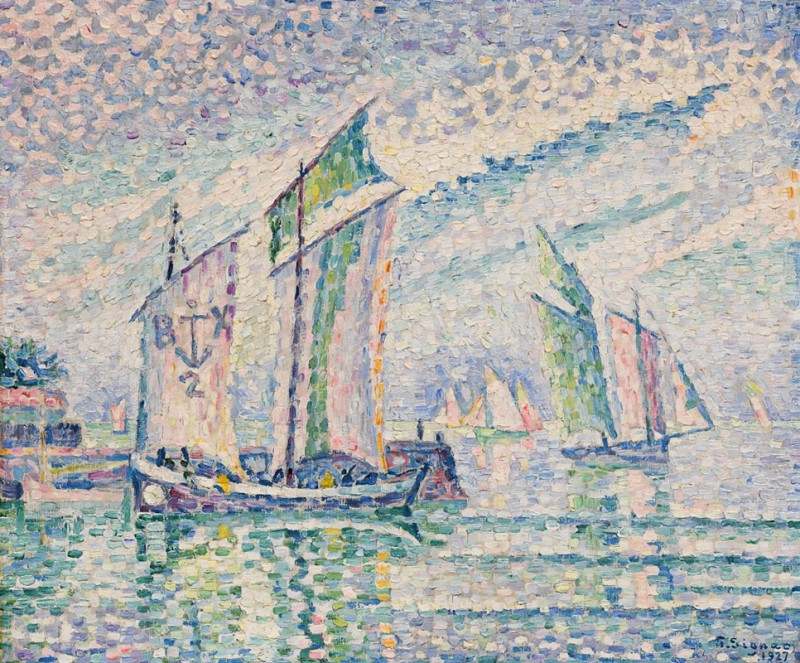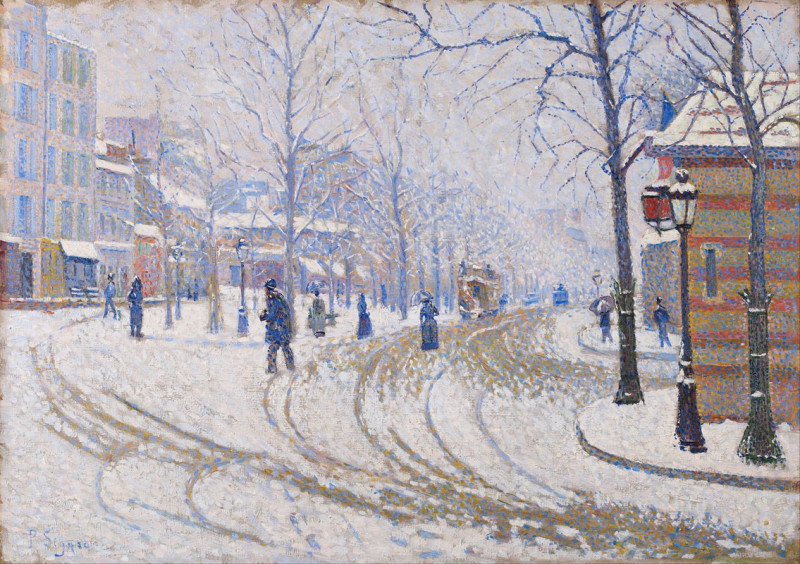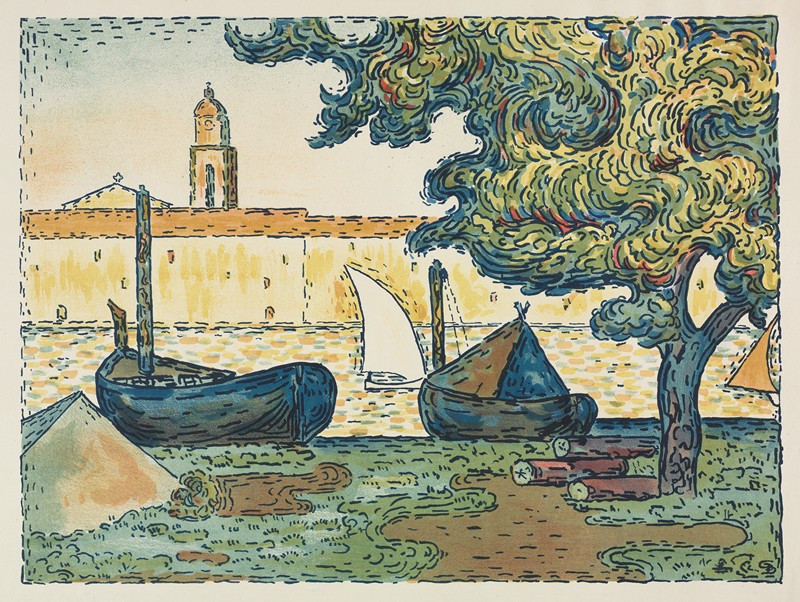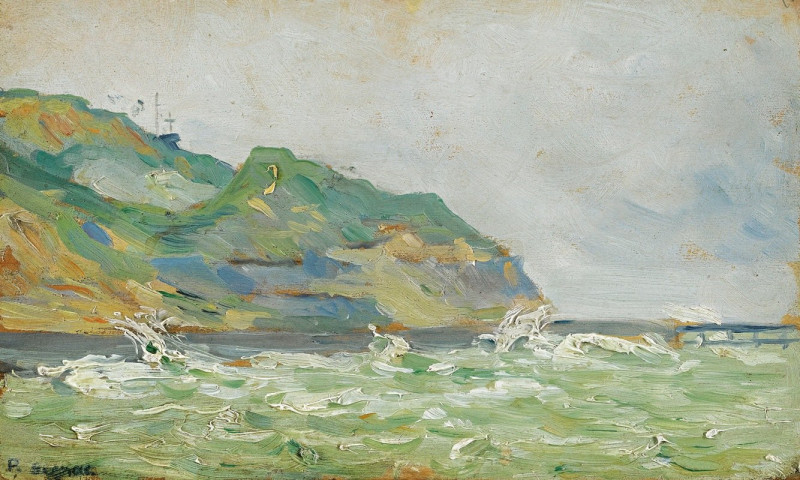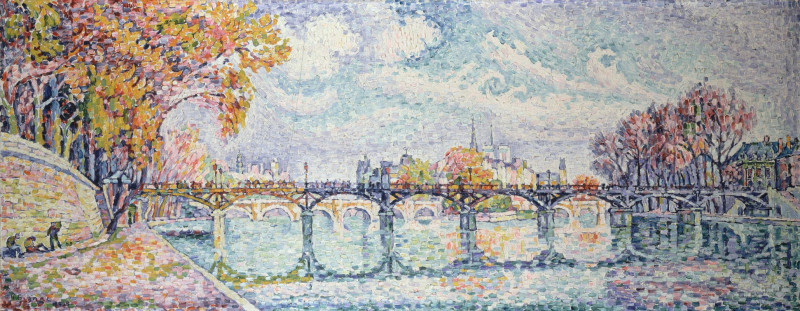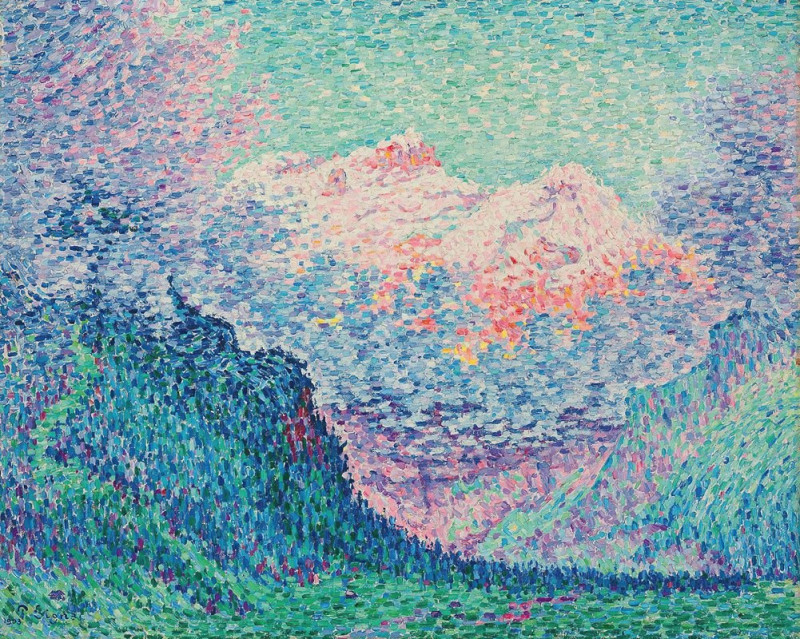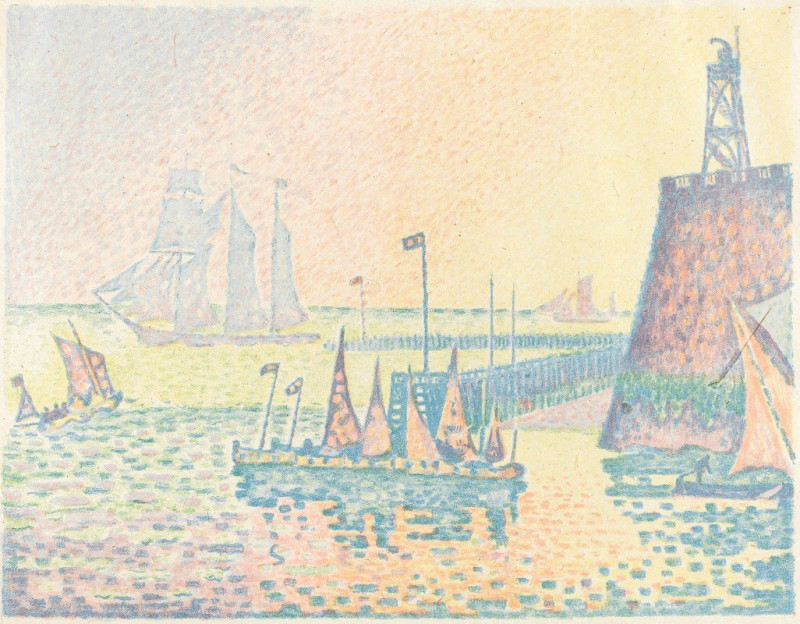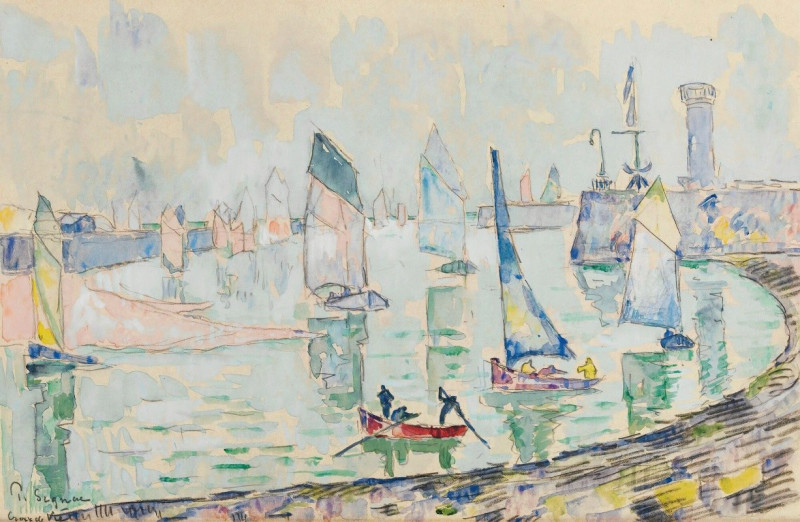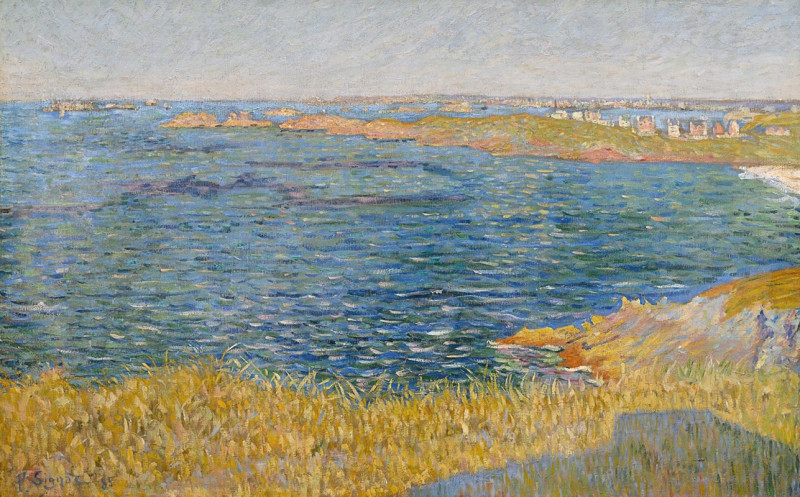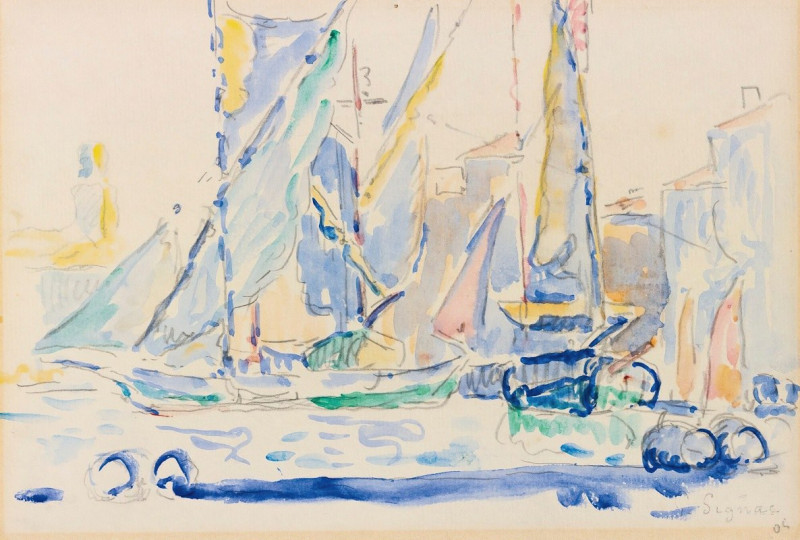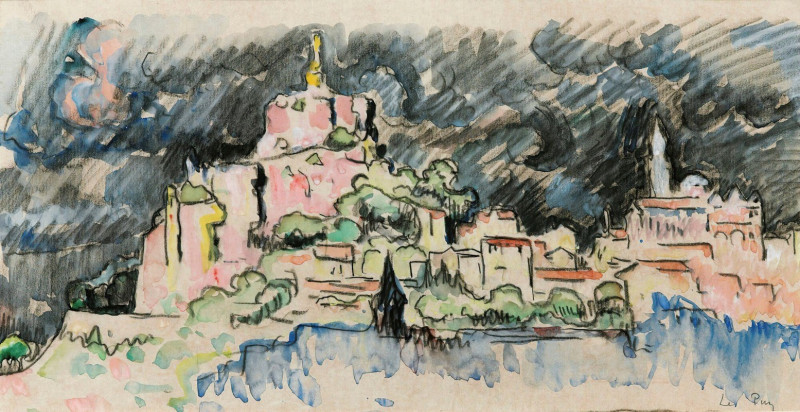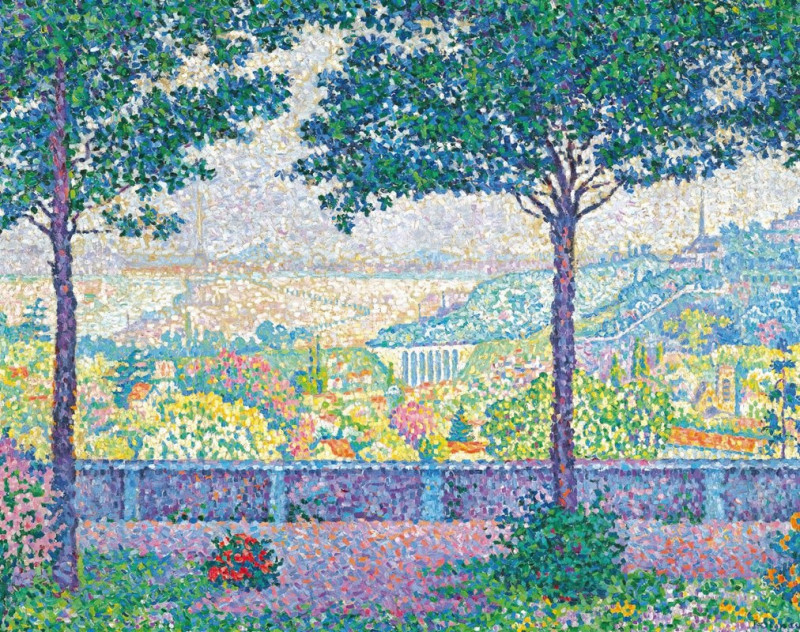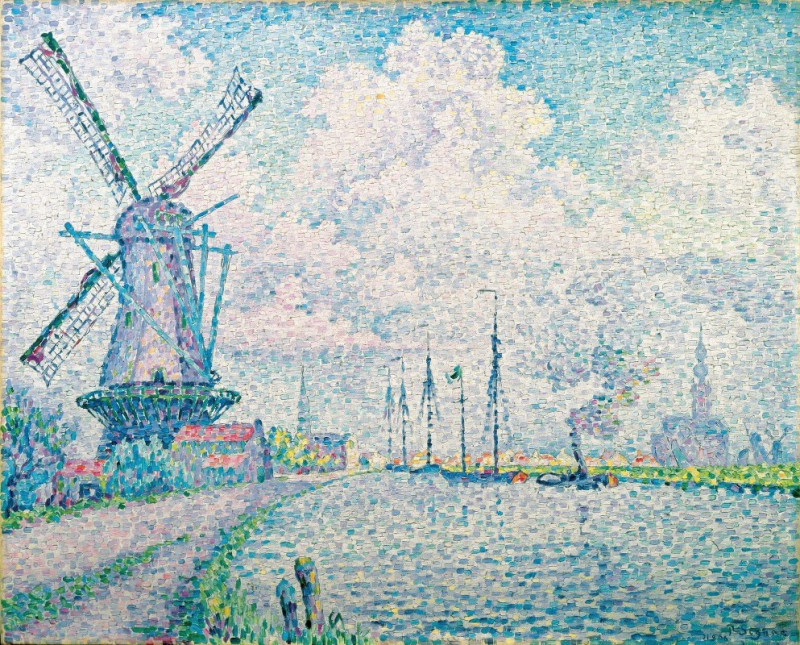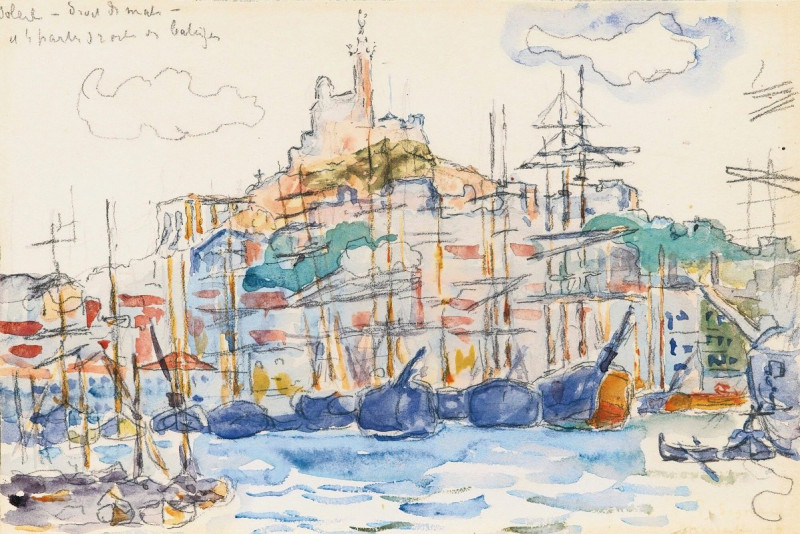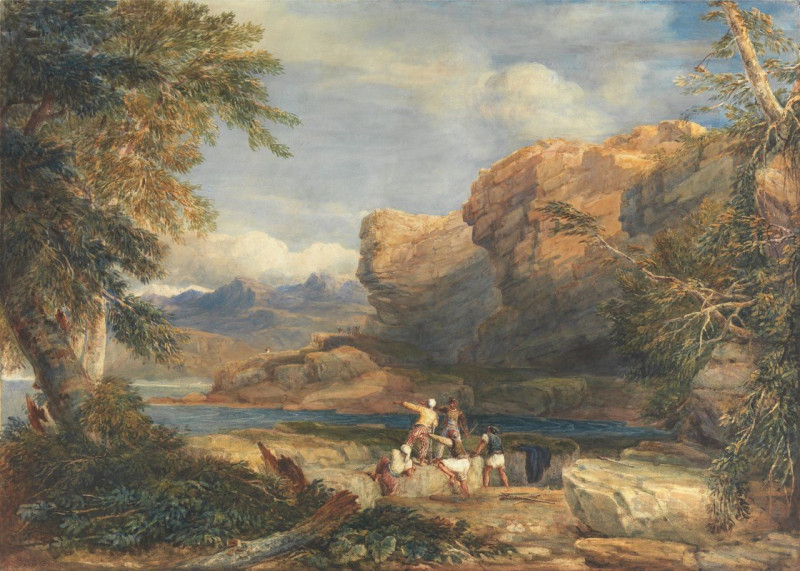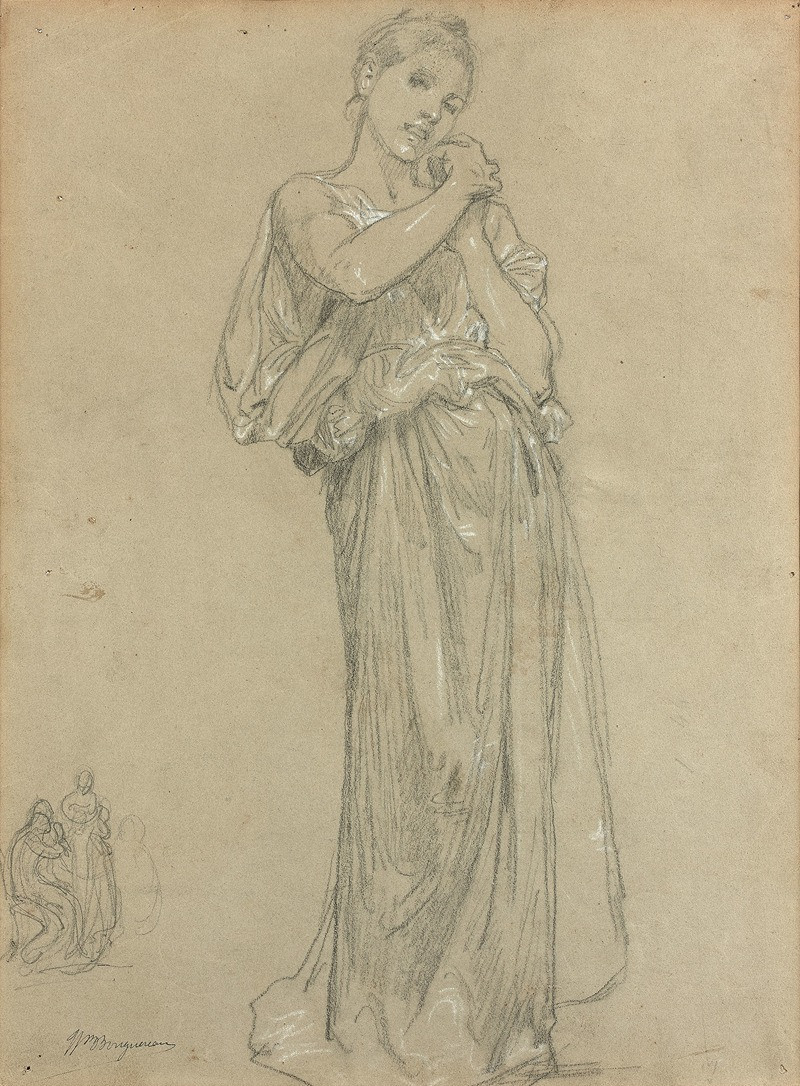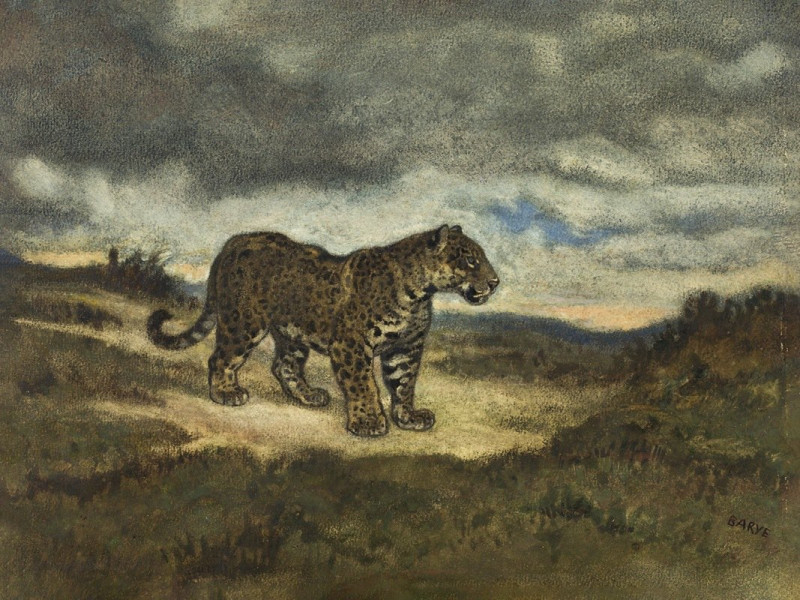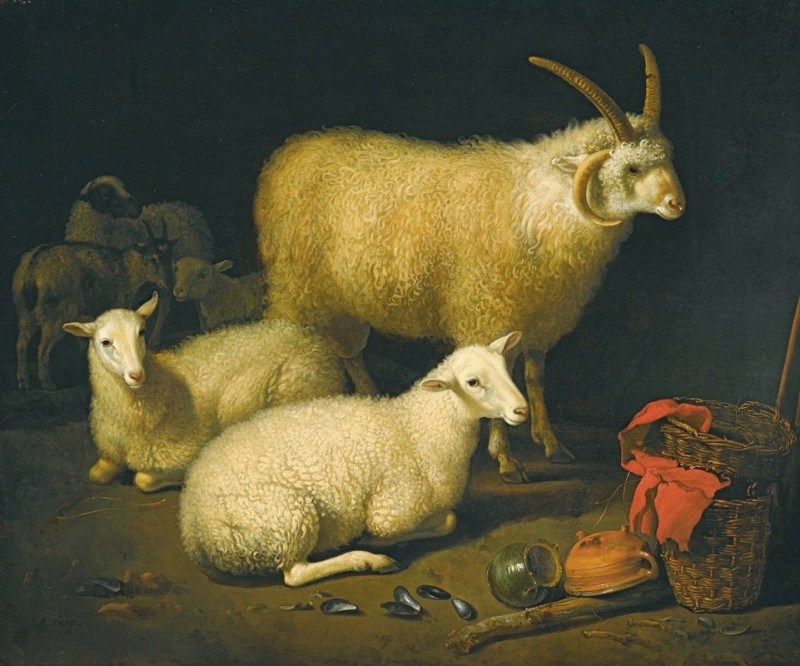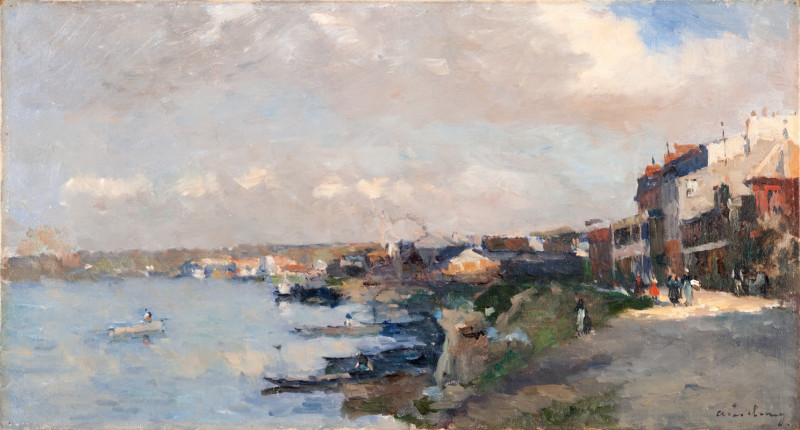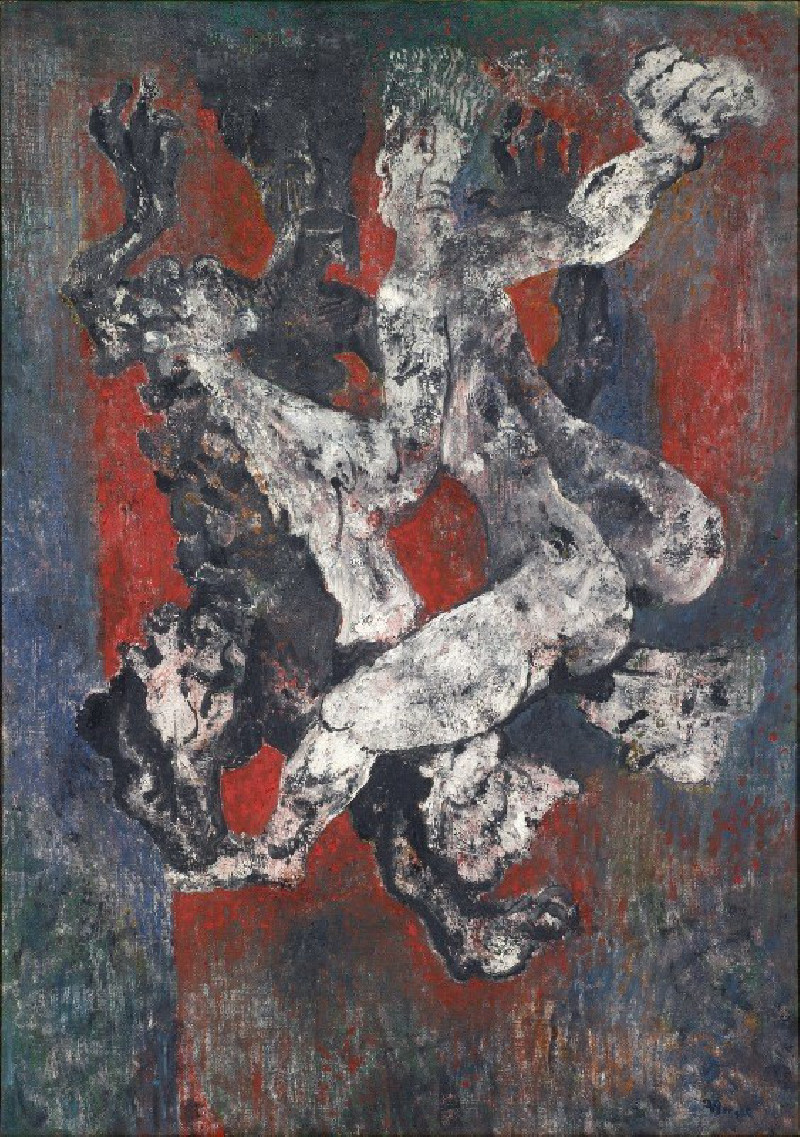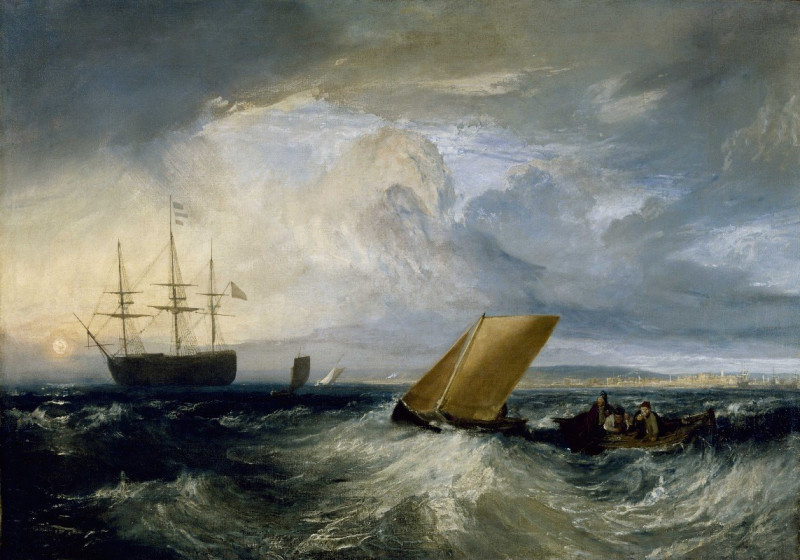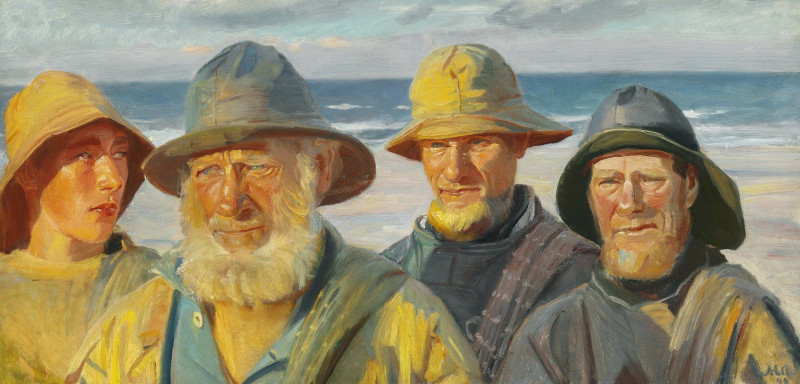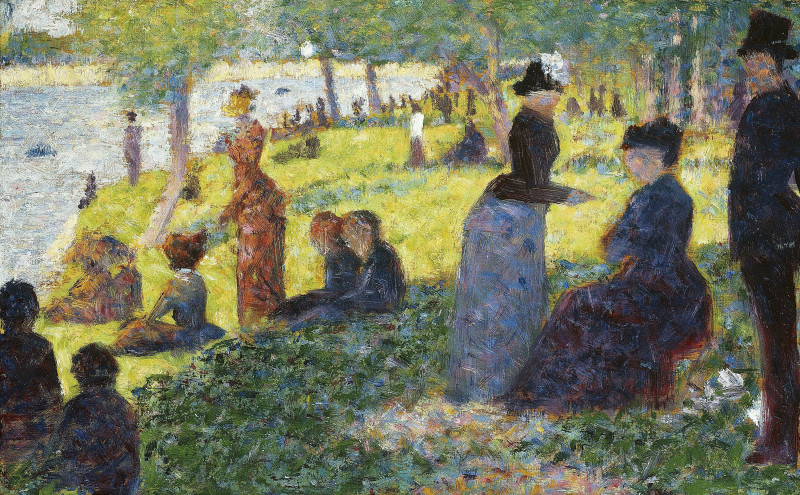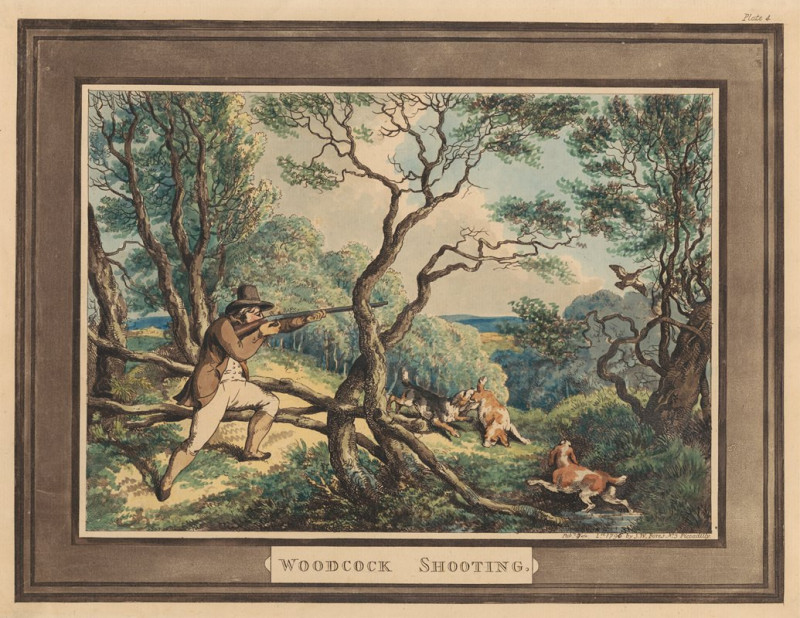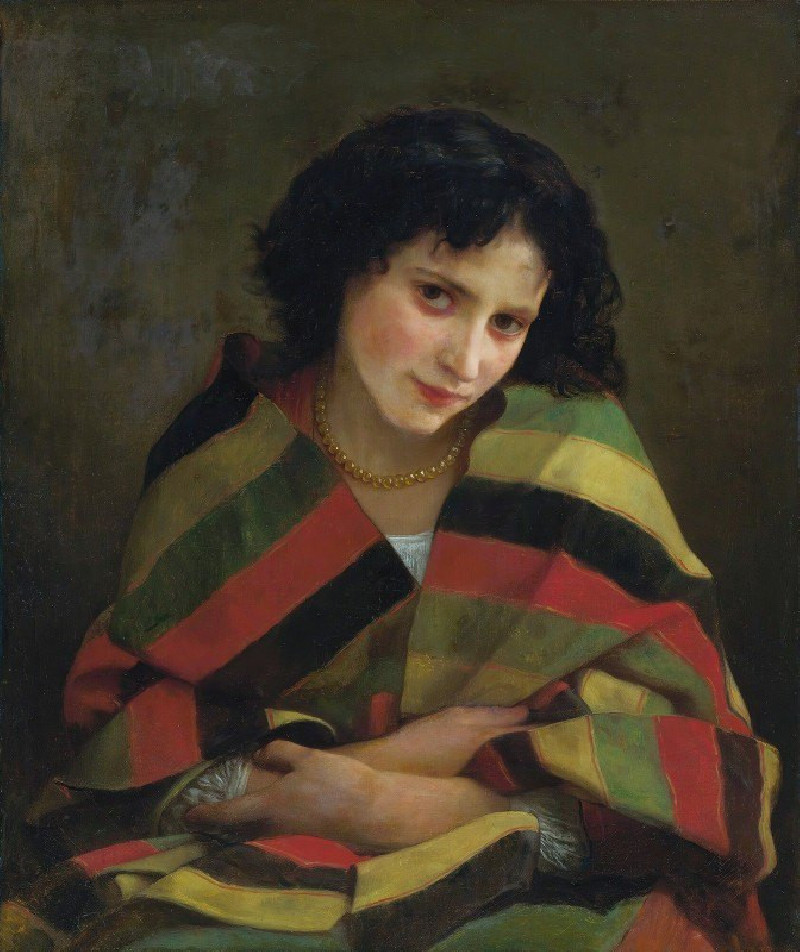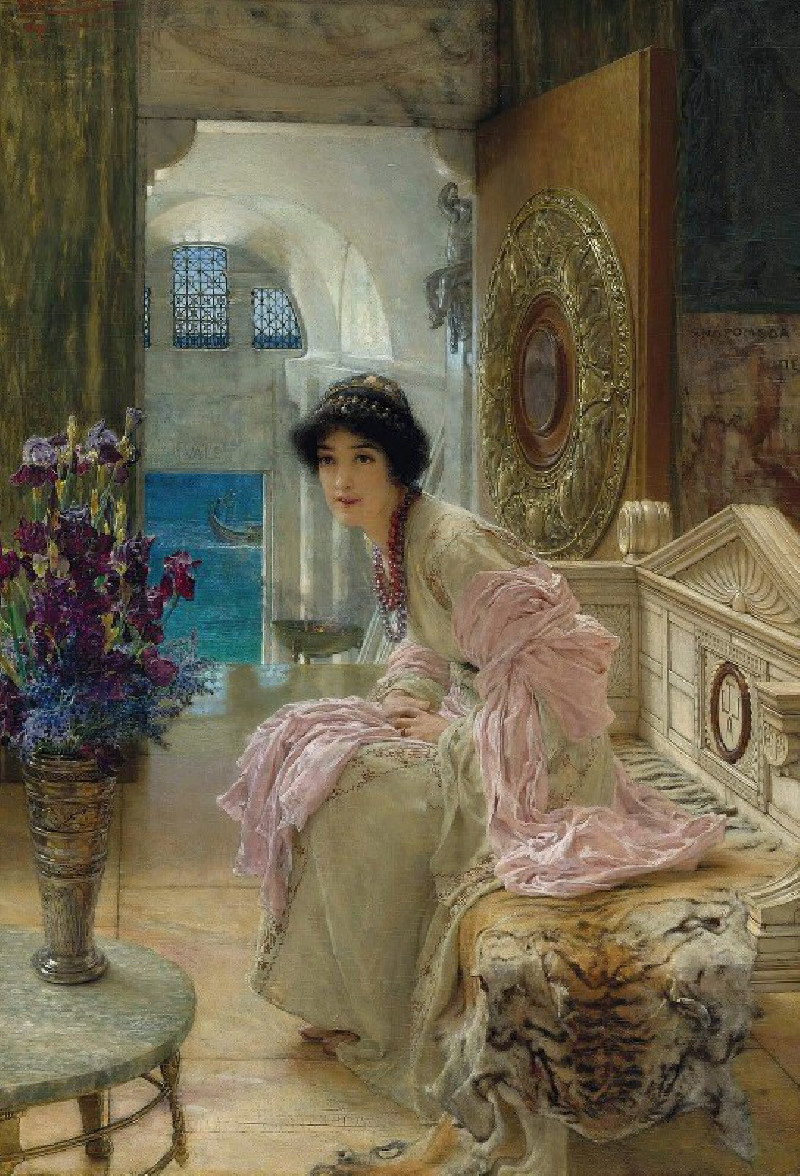Barfleur (1931)
Technique: Giclée quality print
Recommended by our customers
More about this artwork
"Barfleur" (1931) by Paul Signac is a vibrant painting that captures the tranquil yet lively essence of the French seaside town, Barfleur. This dazzling piece uses Signac's signature pointillist style, employing small, distinct dots of color that blend together to create vivid, shimmering scenes.The painting portrays a bustling harbor with boats bobbing gently on the sparkling waters. The foreground features several boats, each bedecked with brightly colored sails, suggesting a breezy day at sea. The reflections of the boats and their sails ripple beautifully in the water, enhancing the sense of movement within the serene harbor.In the background, viewers can see the charming architecture of Barfleur, characterized by robust, earth-toned buildings. A dominant structure in the scene possibly represents the town's church, standing majestically with its distinct green roof and imposing presence among more modest houses. The cheerful, yet somewhat softened palette conveys a warm and inviting atmosphere typical of a bustling, yet peaceful coastal town.Above all, the sky scattered with fluffy clouds hints at the changing weather, providing a dynamic contrast to the stable and steady life along the port. This piece not only reflects the physical beauty of Barfleur but also captures the tranquil rhythm of daily life by the sea, anchored in the traditions and natural beauty of the maritime landscape.
Delivery
Returns
Paul Signac (1863-1935) was a French Neo-Impressionist painter. Together with Georges Seurat, Signac developed the Pointillism style. He was a passionate sailor, bringing back watercolor sketches of ports and nature from his travels, then turning them into large studio canvases with mosaic-like squares of color. He abandoned the short brushstrokes and intuitive dabs of color of the impressionists for a more exact scientific approach to applying dots with the intention to combine and blend not on the canvas, but in the viewer's eye.

